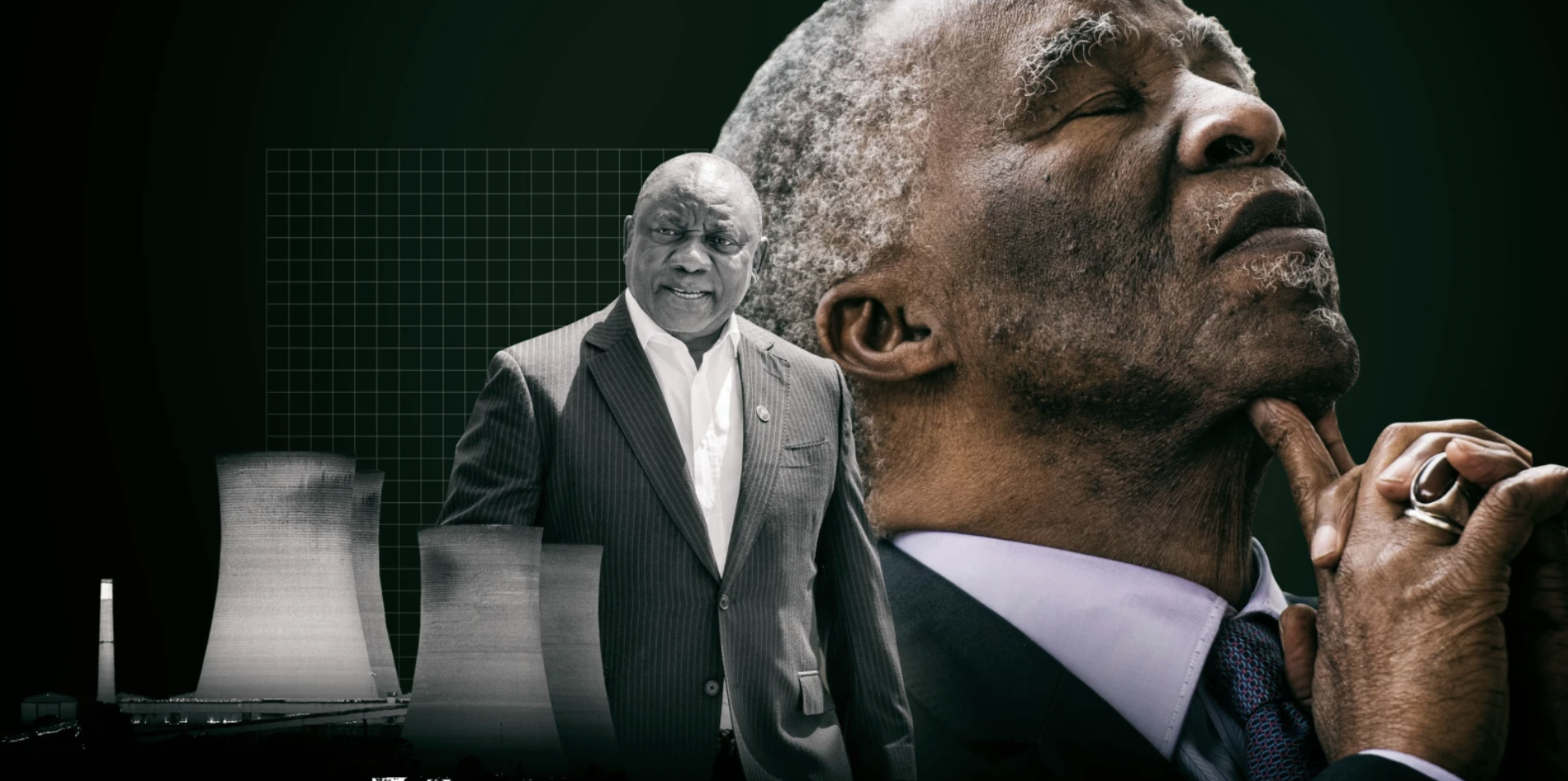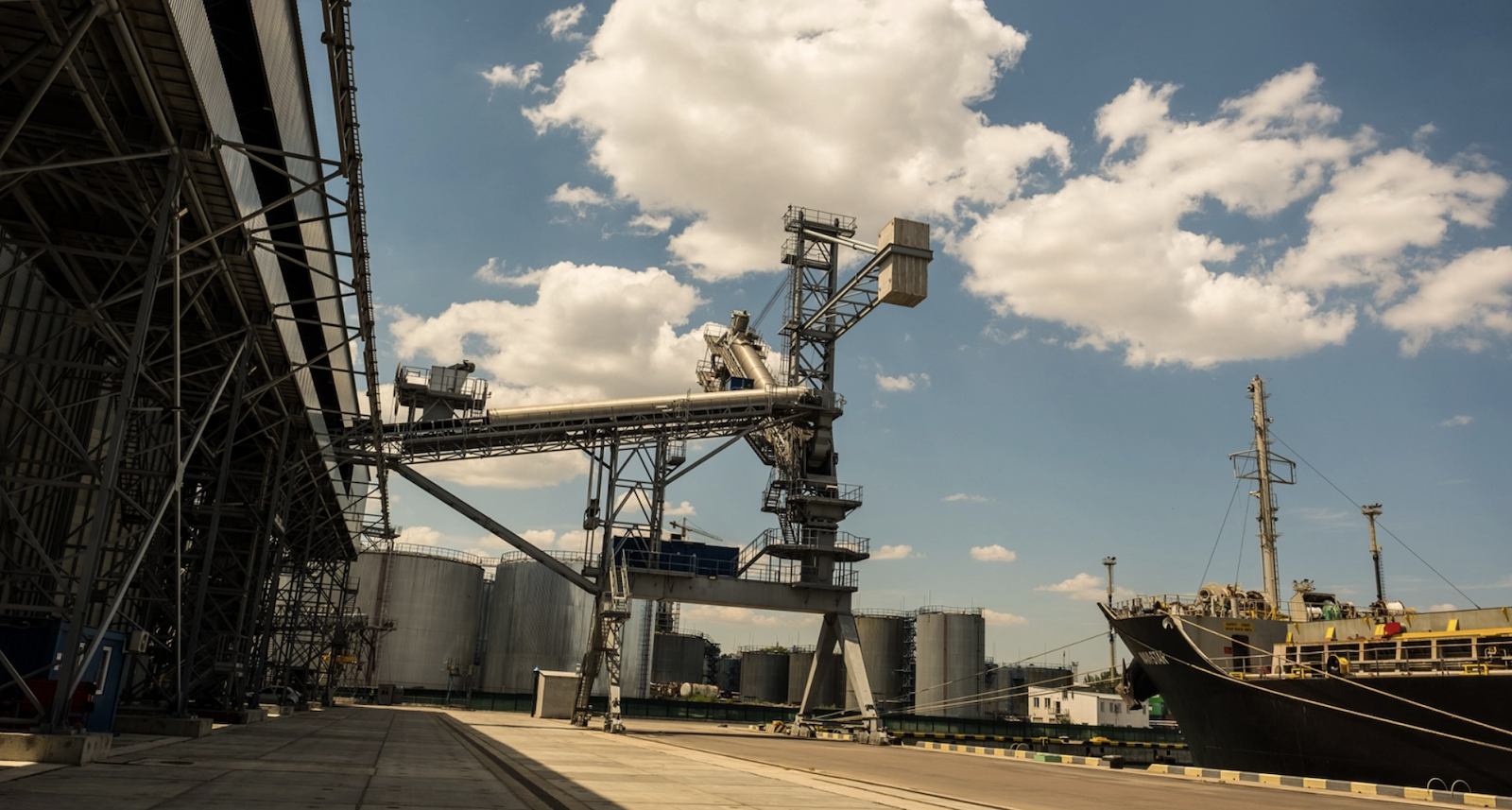News
In the Darkness of Rolling Blackouts, Ramaphosa's Fate is Being Decided
President Cyril Ramaphosa is about to announce a revamp of South Africa's energy policy. Will he make the right choices, or will he usher in a second era of confusion and failure?

The lessons of 1998 ought to have been learnt by now. What few realise is that the “load shedding” of recent times has its roots in a catastrophic policy failure under Ramaphosa's predecessor, Thabo Mbeki.
In the 1990s, electricity was plentiful and cheap, even though the state had initiated a vast distribution programme to extend the network to those excluded under apartheid.
A low-cost, coal-fired fleet was producing surplus energy at one of the best prices in the world. The South African economy was powering up and would, in the early 2000s, enjoy growth of over 5% for consecutive years.
Sitting at the heart of the energy network was the giant state-owned enterprise, Eskom, a beacon of efficient power production, but somewhat out of tune with the global trend towards modernising production to make it more responsive to market demand.
1998 energy white paper
The policy disaster began with the publication of an energy white paper in 1998. The government decided it had the space and time to reorient its energy policy to bring it into line with other developing nations, where increased private participation in the generation of energy and the transmission grid was becoming the norm.
In December that year, the Department of Minerals and Energy produced its White Paper on the Energy Policy of the Republic of South Africa. The paper outlined how the government wanted to modernise energy production.
“Government supports gradual steps towards a competitive electricity market while investigations into the desired form of competition are completed. Eskom will be restructured into separate generation and transmission companies. Government supports the development of the Southern African Power Pool [SAPP]. Various measures to improve governance effectiveness within the sector are presented,” the white paper said.
The upshot of it was that the “government will encourage competition within energy markets”.
The government committed to seeking to stimulate energy investment “from both local and foreign sources” by creating “an investor-friendly climate in the energy sector through good governance, stable, transparent, regulatory regimes and other appropriate policy instruments”.
In essence, it had decided that future generation capacity would be added by the private sector. This was confirmed when Eskom's requests to expand its build programme to meet future needs were then denied by the government.
The utility adapted by downsizing its engineering and management capacity to roll out new power stations, leading to the departure of many engineers, procurement specialists and other high-level skills.
The white paper actually foresaw that the country would run out of electricity by 2007 due to increasing demand and poor maintenance, but the government failed to get the projected new private investment in energy production off the ground.
Mbeki agenda backlash
In the early 2000s, President Thabo Mbeki faced a growing backlash against his economic agenda, which was caricatured as “neo-liberal”. In this environment, what was essentially the privatisation of future generation capacity became a non-starter, and nothing was done about the looming energy crunch.
When the government finally woke from its slumber in 2004, when the Department of Minerals and Energy finally invited proposals for increasing power production by 1,000 MW a year from 2007, the private sector was hesitant, as it was explained that Eskom would retain market dominance and control at least 70% of generation.
As a result, when the predicted shortfall came in 2007 and 2008, Eskom introduced a new phenomenon, “load shedding”, a euphemism for blacking out sections of the grid because there was insufficient power supply. It was believed that, without load shedding, there was a risk that the entire grid could collapse.
Medupi and Kusile
Panicked by the shortfall, the government responded by authorising Eskom to build on a scale never seen before. Two power stations — initially codenamed Alpha and Bravo and later named Medupi and Kusile — each producing a mammoth 4,800 MW, would be rapidly constructed to plug the generation hole.
Eskom, now bereft of the project management, engineering and procurement skills it had lost when the government said it no longer needed to build power stations, found itself managing two of the largest power station builds on the planet.
The scale of these build programmes was astonishing, matched only by the scale of their failure. Over budget, under capacity and at the centre of the State Capture feeding frenzy, they have cost the country hundreds of billions of rands.
On the eve of the party congress that would elect Jacob Zuma, Mbeki issued an apology for the crisis. “Eskom was right and the government was wrong,” he said of the decision to halt new power station builds almost a decade earlier.
During President Jacob Zuma's euphemistically named “lost decade”, no policy adjustments were made and the crisis grew worse as Eskom became a parking lot for unskilled party cadres on bloated salaries, as the feeding frenzy intensified with coal contracts going to the Guptas.
Enter Ramaphosa
Ramaphosa's ascension to power as ANC president in December 2017 — just shy of five years ago — was supposed to usher in a new era of reform to address the country's power problem.
A two-pronged strategy — clean out the rot in Eskom and develop a new energy plan that allows for private generation — appeared to be the strategy.
There has been a concerted effort to cut out the rot, although much remains. The trouble is, it is not just the rot of State Capture, but also that of decades of “cadre deployment” — recently declared to be illegal by Chief Justice Raymond Zondo in his final State Capture inquiry report. That cohort of appointees appears to be politically untouchable, long after Zuma's exit.
Integrated Resource Plan
The policy dimension has been a confusing failure. Ramaphosa's Integrated Resource Plan for energy, crafted by the Minister of Mineral Resources and Energy Gwede Mantashe in 2019, failed to inspire confidence.
As the energy commentator Chris Yelland has observed, it had “deep flaws, significant delays and unnecessary additional costs” and was out of date by 2021.
The plan, which set its horizon at 2030, included the politically expedient, but fanciful idea that South Africa could somehow build and operate power lines running through several neighbouring countries, bringing some 2,500MW of hydropower from Democratic Republic of the Congo's Inga project into the grid. Deus ex machina, the lights would come on.
It also called for 1,500MW of new coal generation, despite the fact that it had already proved impossible to finance for earlier coal projects suggested in 2014, both of which had been shelved.
Turnaround plan
In his State of the Nation address in February 2019, Ramaphosa produced a hoary chestnut: Eskom was to be broken into three parts — generation, transmission and distribution. This would expose the true balance sheets of the three businesses and open them to private sector funding.
It was an old idea which had been proposed in the white paper of 1998, and then shelved.
This time, Ramaphosa appeared serious. Eskom was “in a crisis” and it was time for “bold decisions and decisive action” to fix the utility.
“The consequences may be painful, but it may be even more devastating if we delay taking action,” Ramaphosa said.
The government supported Eskom's “nine-point turnaround plan” which sought to cut costs while bolstering earnings by getting municipalities to cough up what they owed.
Eskom needed “a new business model” which would address the crisis and outline a pivot to clean energy.
Ramaphosa repeatedly emphasised the speed with which these actions were to be undertaken. “It is imperative that we undertake these measures without delay to stabilise Eskom's finances, ensure security of electricity supply, and establish the basis for long-term sustainability.”
Worst energy crisis yet
Three years later, the country is in the throes of its worst energy crisis yet, with power being switched off regularly on most days and the economy teetering on the brink of collapse.
The government's energy policy is in the doldrums. The process of breaking Eskom up into three entities “without delay” is grinding on slowly and in the shadows, as the crisis lights of more and more coal-fired units flicker on the Eskom dashboard.
Meanwhile, there are loud public contests over policy. It does not help that there are two ministers — the Minister of Public Enterprises, Pravin Gordhan, and Mantashe — who are in charge of energy production.
Mantashe has made some astonishing pronouncements, including a statement earlier this year that he is a “coal fundamentalist”.
Addressing a colloquium at the Council for Geoscience in Pretoria, Mantashe was quoted saying: “Many think that there will be no coal generation by 2030. I can assure you that there'll be a lot of coal generation by 2030… because I'm a coal fundamentalist.”
Then, in one of the more colourful interpretations of the power of competition in a free market, Ramaphosa proposed creating a second state-owned energy company to compete with Eskom, apparently emulating China's model of market competition.
“If we look at other countries like China, it has a number of state-owned electricity generating companies that compete amongst themselves to bring prices down. That is a future that we should begin to imagine.”
Mantashe eagerly backed him, saying in the Sunday Times that such an entity would fall under his department, competing with Eskom, which fell under Gordhan.

“All that excites me is that the president begins to talk to me. It means he is warming to the idea, and that to me is a call for me to act with speed,” said Mantashe.
Even as the country began to imagine this unlikely future of one-party-inspired free-market competition, Ramaphosa appeared to back down, saying that Eskom was the priority — for now.
Mantashe's gas flirtation
In the meantime, Mantashe, despite being a “coal fundamentalist”, has begun an unseemly flirtation with gas. The investigative journalists at amaBhungane have revealed that he has quietly been setting up a state gas company to increase the volume of gas piped from Mozambique.
And, not long ago, Mantashe announced that gas-fired Turkish “power ships” would be commissioned as an emergency energy provider, although with a puzzlingly long 20-year contract. This was soon spiked by environmental concerns.
Mantashe has also appealed to the country to buy “cheap Russian oil”, a new flirtation that has flared since Russia's invasion of Ukraine, which has led to Western-led sanctions. Perhaps unsurprising because the Russian oligarch model is, after all, preferred by the party's elite.
Renewables limbo
While the debate over the future of Eskom's coal-fired fleet took these unanticipated detours, the government's pivot to renewables remained in a state of limbo.
The slow approval of private renewable generation through lengthy and limited “bid rounds” has seen the licensing of Independent Power Producers, but renewable energy remains only around 10% of South Africa's energy mix.
The emergency measure to allow companies to generate 100MW of their own power through renewables appeared to be a loosening of the shackles. But for such investment to be justified, these projects would have to be “grid-tied” — powering up the grid with a surplus when this was available. To achieve this, they have to acquire a grid permit from none other than the coal fundamentalist himself. The take-up has been slow.
Just energy transition
This is despite no less than $8.5-billion in cheap — or even free — financing being made available to South Africa for a “Just Energy Transition” from fossil fuels to renewables at the COP26 summit in late 2021. The government expressed its delight at the windfall, but has inexplicably failed to present a coherent plan for how it intends to use this money to generate energy.
Instead, by March this year, it was burning nine million — nine million! — litres of diesel a day to plug the energy gap, and SA remains the world's worst coal polluter in proportion to population size.
What to do
What Ramaphosa should do is abundantly clear to all.
He should create a single integrated ministry of energy, allow the uncapped and rapid expansion of private generation of grid-tied renewables without red tape, provide the sovereign guarantees needed to attract finance for renewables, and give Eskom management the freedom to reinvent it as a functional meritocracy.
So what is holding him back? Is it the spectre of Mbeki's removal by Zuma, in alliance with the unions and the SACP back in 2007 after he was described (wrongly, if you look at the state balance sheet) as a neoliberal privatiser?
Does he fear that he will lose traction with the unions — his original base inside the party which has the machinery to campaign on a larger scale than the ANC itself — ahead of December's leadership conference?
Does he fear that Mpumalanga — South Africa's swing state which sealed his rise to power — will baulk at the loss of coal jobs and the industrial ecosystem around this which is located in that province?
Does he want to preserve the route to a gas revolution to appease the Russians, among whom is the party's largest funder, the Russian oligarch Viktor Vekselberg? He owns a substantial slice of United Manganese of Kalahari. This publicly disclosed funding might be the tip of a larger iceberg heading the ANC's way as the world closes to Putin's inner circle.
Does the President fear the backlash that would result from displacing the vast network of party officials who benefit from the network of coal mining and trucking contracts that clog up Eskom's arteries?
Whatever the reason, Ramaphosa's paralysis poses a clear and present danger to South Africa's economic prospects.
Perhaps he should look up from his party's navel to the broader political horizon. There, he will see a growing gathering of political forces inside and outside the ANC that are determined to topple it from power.
Every time the lights go off, their number grows.
This article originally appeared on the Daily Maverick


